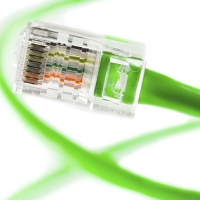Embedding cutting edge ICT infrastructure in Slovenian schools
At least 455 schools and 621 research institutions across the country stand to benefit from the scheme, in which the EU is contributing nearly €12.5 million through the European Regional Development Fund. The project will support the purchase of optical fibres and the equipment required to connect to the Slovenian education and research optical network. By providing high speed connectivity to the Slovenian learning sector, the project will help to ensure the international competitiveness of the Slovenian education system and research sector. Indeed, at present there is a lack of optical connections between research and education organisations in Slovenia, which is slowing the efficiency of their operations. In setting up an optical network, research and education organisations will be able to enhance their international competitiveness and introduce new work methods, as well as increasingly partake in international projects and development. The initiative will also offer cutting-edge technologies and communication services in order to make full of use of e-textbooks and other cutting edge educational technologies. In this way, the project is very much in line with the EU’s Digital Agenda, which aims to reboot Europe's economy and help Europe's citizens and businesses get the most out of digital technologies. The Digital Agenda is the first of seven flagships initiatives under Europe 2020, the EU's strategy to deliver smart sustainable and inclusive growth. In announcing the launch of the project earlier this summer, the Slovenian government said that investing in ICT in research and education was vital to ensure that such technology is fully integrated into young people’s lives. Depending on the needs and foreseen development of research organisations, IT connectivity can be established through a higher-performing optical fibre infrastructure, which is what this project is all about. And with the digital economy growing at seven times the rate of the rest of the economy, it is vitally important that Slovenia – as with every other Member State – is in a position to take advantage of the new opportunities being created. By investing in ICT infrastructure at schools and higher education institutions, this project is helping to ensure that the next generation of Slovenians is fully equipped to navigate a world. Slovenia is already making impressive progress in the communication industry, as the rapid increase in mobile phone usage and cyber communications shows. By the end of 2013, there were 2.284 million mobile telephones in use in Slovenia with a population of some 2.05 million, a 2-percent increase from the year before.For more information, please visit: http://www.svrk.gov.si/en/media_room/news/article/1328/5778/8496b30cedd47a3f8a157e8288819db4/(opens in new window)
Countries
Slovenia



